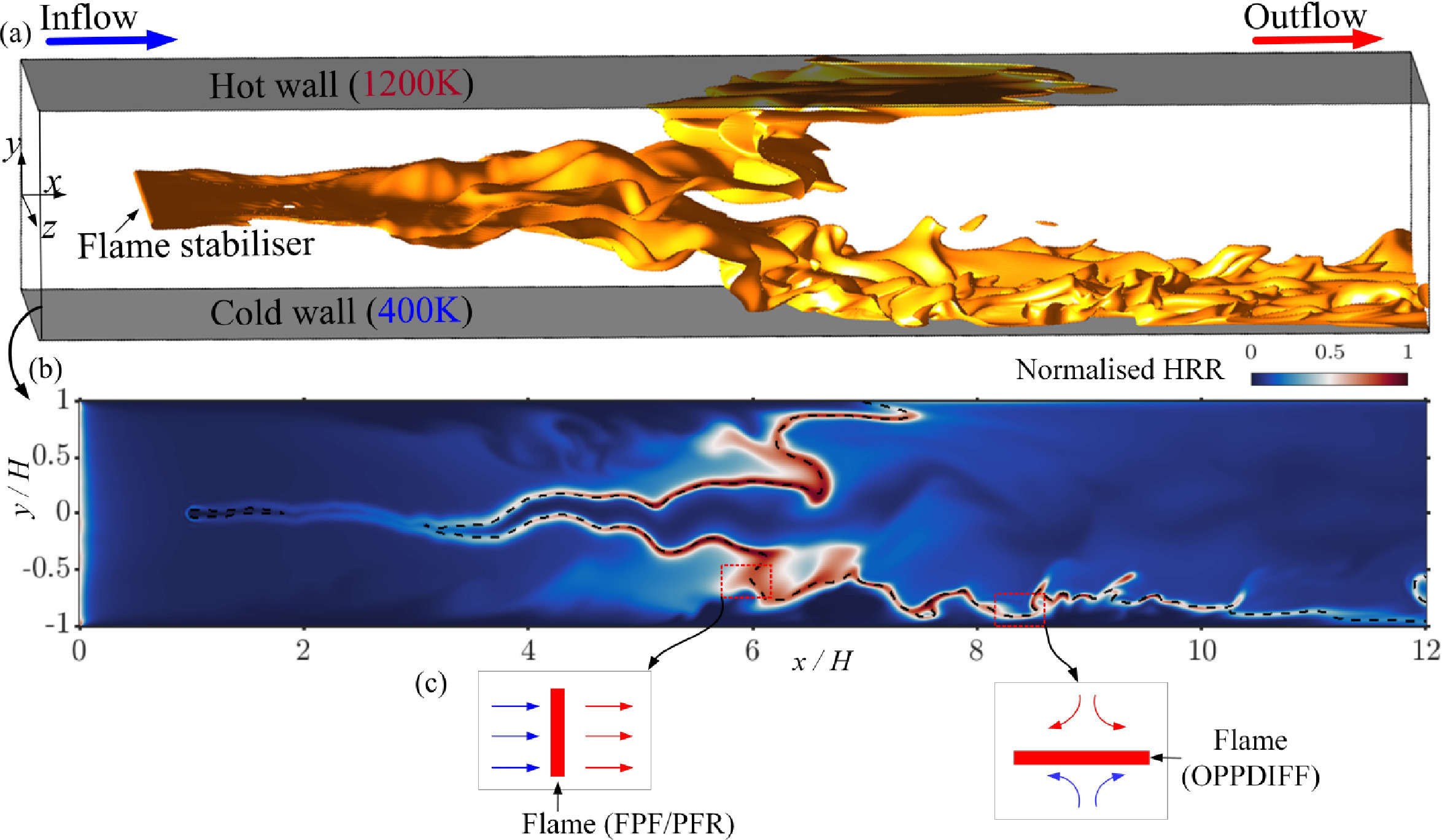Reacting Channel Flow
Premixed Flame-wall Interaction CH4-Air DNS

Description
This DNS configuration by Jiang et al. investigates the flame-wall interaction for methane/air flames diluted by hot combustion products in a 3D turbulent V-flame configuration inside a channel with isothermal hot and cold walls. At the inlet of the channel, the reactant mixture consists of a mixture of cold reactants (30%) and hot combustion products from 1D premixed freely-propagating flame simulation (70%), resulting in an inlet temperature of Tin = 1705 K at 2 atm pressure. The hot and cold wall temperatures are fixed at 1200 and 400 K, respectively. The inlet turbulence is generated with a non-reacting simulation of the same channel. Then, the results collected at a sampling plane of x/H = 4 are fed into the reacting simulation. This turbulence generation allows coupling of the velocity and temperature fluctuations at the inlet.
Velocity fluctuations are first produced using the Passot-Pouquet spectrum for the turbulent kinetic energy. The inlet turbulence for the non-reacting simulation was then generated by rescaling these fluctuations with the RMS profiles of a fully developed channel flow at a Reynolds number of 3200. Next, this is fed into the domain with a convection velocity 25% lower than the mean inlet velocity at the centerline. This accounts for a correction to the Taylor’s hypothesis due to the high near-wall shear stress. Non-reflecting Navier-Stokes Characteristic Boundary Condition (NSCBC) is used for the outlet boundary, and a periodic boundary condition is used in the z-direction. For the reacting case to ignite, a cylindrical hot patch is imposed at y/H = 0 and x/H = 1 with a diameter of 0.03H, which creates two branches of the V-flame that interact with two walls.
The domain size is 12H × 2H × 3H, with a grid size of 1000 × 250 × 250, which stretches from 5 μm at the wall to 30 μm at the centerline in the y-direction, and 30 μm uniform grid in both x- and z-direction, and ensures at least one grid point within one wall unit and a mean grid size less than 1.4 times the Kolmogorov length scale. There are around 20 grid points inside the flame thickness as well.
The numerical solver used for the DNS study is NTMIX-CHEMKIN. This solver features an eighth-order central finite difference scheme for spatial derivatives and a third-order Runge-Kutta time integrator. A tenth-order explicit filter is also used to eliminate spurious oscillations at high wave numbers. Ideal gas law is used as the EoS. A reduced mechanism for methane/air combustion with 23 species, 12 quasi-steady species and 205 reactions is developed for this study.
Quick Info
- Kaggle Link
- Contributors: Bin Jiang, Mohsen Talei
- Nx = 1001, Ny = 251, Nz = 251, Nɸ = 6 + 23
- Size = 89 GB
- DOI
- .bib
- info.json